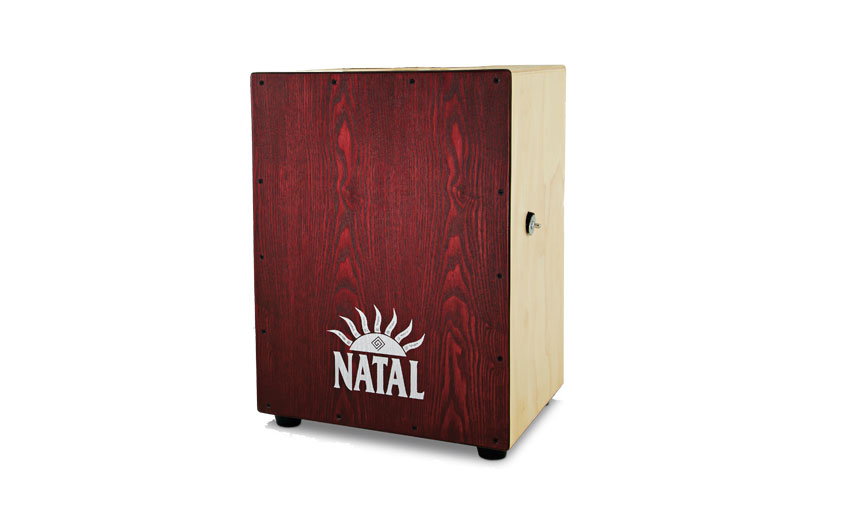MusicRadar Verdict
A decent sized and deep sounding budget cajon.
Pros
- +
Good size and deep, sophisticated tones. Offers decent value for money.
Cons
- -
Thin construction may not hold well over time.
MusicRadar's got your back
Marshall's purchase of Natal back in 2010 has resulted in more than a revamped central drum line, the firm's percussion range is also increasingly worthy of your attention. Here we take a look at one of the firm's Large cajons.
Build
Natal's cajons come in Large and Extra Large. Our review model is Large, 14" (36cm) wide, 113⁄4" (30cm) deep and 183⁄4" (48cm) tall.
Budget-conscious construction is of pretty thin ash ply with a more solid top seat and bottom, while a 12.5cm (5") sound hole is slap in the centre of the back panel.
Four chunky rubber feet provide extra stability. There's a strongly-figured wavy grain pattern on the frontplate and the whole box is well finished, satin smooth except for the seat which has a roughened surface for grip.
Hands On
"The overall vibe is quite bassy and warm, lending a touch of sophistication to what is, after all, just slapping a wooden box"
The Large Cajon is a good size, though the thin construction makes you wonder how long it will hold up. The thin ash walls give a loose and reverberant tone. The top slap is quite dark and even after partially loosening off the two top outer screws you get only a moderately sharp crack.
On the other hand the overall vibe is quite bassy and warm, lending a touch of sophistication to what is, after all, just slapping a wooden box.
Two short vertical lengths of 20-strand snares are fixed inside to a wooden former and loosely slipped under a nylon band at the top. They can be crudely moved closer or further away via a drum key-operated bolt on the side.
Want all the hottest music and gear news, reviews, deals, features and more, direct to your inbox? Sign up here.
We got the most snare response somewhere in the middle region, not too tight or loose, same as with a conventional snare. Although this certainly is not a sophisticated strainer like you would find on a snare drum.
